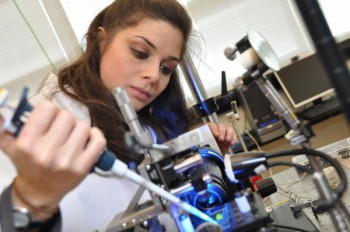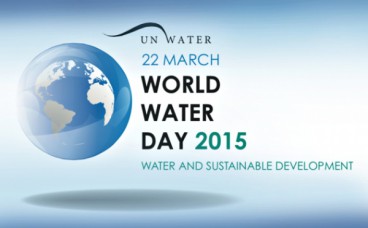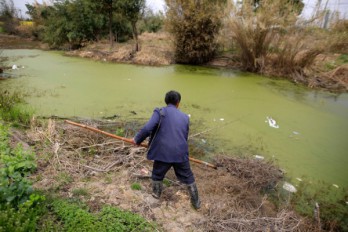Penn State Researchers Develop New Technique for Identifying Shale-drilling Additives in Drinking Water

Researchers at Penn State University have developed a new analytical technique for identifying common drilling substances in drinking water. Using the technique, the scientists reported contamination in the drinking water taps of three Pennsylvania homes located near a known well-pad leak.
Researchers at Penn State University have developed a new analytical technique for identifying common drilling substances in drinking water. Using the technique, the scientists reported contamination in the drinking water taps of three Pennsylvania homes located near a known well-pad leak.
The new method requires highly sophisticated equipment and calls for testing a range of possible contaminants at low concentrations, instead of testing for specific substances. The scientists found 2-BE, a chemical compound, and an unidentified complex complex mixture of organic compounds, both frequently found in flowback water from Marcellus shale activity, in water from the three taps using the new technique. The findings were published in Proceedings of the National Academy of Sciences this week.
"These findings are important because we show that chemicals traveled from shale gas wells more than two kilometers in the subsurface to drinking water wells," said co-author Susan Brantley, professor of geosciences and director of the Earth and Environmental Institute at Penn State. "The chemical that we identified either came from fracking fluids or from drilling additives and it moved with natural gas through natural fractures in the rock. In addition, for the first time, all of the data are released so that anyone can study the problem." She continued to note that contamination in shallow drinking water sources from shale gas wells has never been fully documented. The new technique promises to improve the evaluation of unconventional gas drilling effects on groundwater.
Despite state environmental regulator involvement, it was not known why the drinking water from the three homes was foaming or that there was flowback water contamination. Frank DOrman, coauthor and associate professor of biochemistry and molecular biology at Penn State said, "this work demonstrates that these events are possible, but that more sophisticated analytical work may be necessary to uncover the details of the impact. In short, we were able to confirm water contamination because we are using non-conventional techniques. Specifically, GCxGC-TOFMS allowed for the characterization of this drinking water where routine testing was not able to determine what was causing the foaming.” GC-GC-TOFMS is a form of gas chromatography coupled with mass spectrometry.
Source: Penn State University
Source: Penn State University
Want to read more like this story?

Researchers have developed a miniaturized water quality sensor that can monitor drinking water quality in real time
Oct, 03, 2017 | NewsThis tiny and inexpensive device -built using a 3D printer- can be deployed anywhere in the water di...

March 22nd is World Water Day!
Mar, 22, 2015 | NewsSince 1993, the United Nations has designated March 22nd of each year as World Water Day, a day dedi...

More than 80% of underground water in China is heavily polluted
Apr, 12, 2017 | NewsIndustrial pollution and farming has rendered it unsuitable for human use Industrial pollution an...

Scientists find ‘Water windfall’ beneath California’s Central Valley, making the state’s water supply three times larger than previously estimated
Jul, 01, 2016 | NewsThis is great news for an area suffering a prolonged drought, however accessing this water in a fina...

Ancient engineering methods to address water shortages
Jul, 31, 2019 | NewsAccording to a new study, published in Nature Journal, a 1,400-year-old system of canals that divert...

Thames Water Accelerates Plans to Secure South East's Future Water Supply
Jun, 07, 2024 | NewsToday marks a significant step in securing the future water supply for the South East as Thames Wat...

New study finds above-limit quantities of PFAS “forever chemicals” in water globally
Apr, 08, 2024 | NewsA new study, led by the University of New South Wales in Sydney, Australia was published on Monday,...

SuntoWater generators produce 150-400L of potable water per day out of thin air
Mar, 06, 2017 | NewsThey can be powered by solar or solar plus grid power They can be powered by solar or solar plus...

Next generation reverse osmosis water purifier
Nov, 16, 2016 | NewsWaterO brings highly-filtered drinkable water to the kitchen table WaterO brings highly-filtered...
Trending

Vertical gardens in Mexico City to combat pollution

Saudi Park Closed After 360 Big Pendulum Ride Crashes to Ground, 23 injured

Characteristics of Load Bearing Masonry Construction

Taipei 101’s impressive tuned mass damper

Dutch greenhouses have revolutionized modern farming

Federal court rules Biden’s offshore drilling ban unlawful


